One of the darkest crimes in the history of the Iraqi state during the Ba’ath regime was the use of chemical weapons, which were prohibited in 1925 under the Geneva Conventions. The Geneva Protocol, also known as the Geneva Convention or Geneva Law, is a regulation banning the use of suffocating, poisonous, or other gases and bacteriological warfare. This law was adopted on June 17, 1925, and came into effect on February 8, 1928, prohibiting the use of chemical weapons in any form. The Iraqi government joined the 1925 Geneva Protocol in 1931, with the caveat that it would not consider itself bound by the protocol if the opposing party first used chemical weapons. However, Iraq itself initiated the use of chemical weapons.
The Iraqi government has consistently disregarded international community decisions and has not adhered to any international principles, committing crimes against humanity without hesitation. Even senior officials of this regime have not denied the use of these weapons. They have considered the use of larger and more destructive weapons as legitimate. The Iraqi government began its research activities related to the development of chemical weapons in the early 1970s and operationalized them in 1982; they are capable of producing various types of chemical agents, including blister agents (mustard gas) and nerve agents (Tabun, Sarin, and VX gas). These were used during the war with Iran and against the Kurdish people from 1984 to 1988.

Numerous documents were issued during the Ba’ath regime in Iraq, discussing the genocide of the Kurdish people, including documents on chemical attacks in Kurdistan. Based on Ba’ath regime documents and witnesses of this crime, we aim to specify in detail the days, months, and years of chemical bombardments in Kurdish areas and locations.
However, due to the lack of recorded moments of chemical attacks, the exact number of victims is unfortunately not straightforward. Still, we have done our utmost to continue the follow-up. This requires effort and time. We will not give up until we have a comprehensive database. The Ba’ath regime, as previously mentioned, had ordered the use of chemical weapons against the Kurdish people under the highest command at the time, Saddam Hussein, and had given the green light to its armed forces in the war with Iran. The Kurdish people bore a significant share of the chemical attacks in 1988.
In a book titled “Critique and Research of the Iran-Iraq War” after the Second Gulf War, a study was conducted by experts and researchers in Iraq and a report was presented to the United Nations, citing 207 international companies from America, Russia, and Argentina for arming Iraq, including (Germany, Spain, Italy, Britain, Brazil, Belgium, Jersey, France, Japan, India, Netherlands, Monaco, Egypt, Poland, Sweden, Switzerland, and Greece).
Rolf Ekeus, the former head of UN inspectors in Iraq, also stated that the Security Council in 1993 had asked UN inspectors and the International Atomic Energy Agency not to disclose the identities of these companies. 90% were European and American, while 10% were from other countries. As one of the most critical pieces of evidence confirming Western companies’ cooperation with Iraq’s chemical weapons program, the trial of Frans van Anraat in the Netherlands in 2004 can be mentioned. The court found the crimes attributed to him (including complicity in war crimes and complicity in genocide) proven due to the sale of several thousand tons of raw materials for the production of mustard and nerve gases by van Anraat to Iraq in the 1980s.
Furthermore, the United Nations Security Council, citing these reports and others, expressed deep concern about the findings of expert commissions regarding Iraq’s use of chemical weapons and strongly condemned this act by issuing Resolution 612 (dated May 9, 1988) and Resolution 620 (dated August 26, 1988)
Data and Information on Chemical Attacks on the Kurdistan Regions- 1988
- On 25/2/1988, the villages of Sargalu, Yakhsmar, Haldan, and Goizile in Sulaymaniyah province were bombed. Dozens were chemically injured.
- On 26/2/1988, in Sulaymaniyah province, the same area and villages (Sargalu, Yakhsmar, Haldan, Goizile) were chemically bombed, resulting in 8 martyrs and 201 injured.
- On 27/02/1988, in Sulaymaniyah province, the villages of Takia, Belkjar, Balakha, and Gomta in the Qaradagh area were bombed chemically by warplanes of the regime, totaling six aircraft. The attack resulted in 40 injured Peshmerga and two martyrs.
- On 16/3/1988, the Halabja region and surrounding towns and villages were bombed with chemical weapons (5000 people martyred) and 10000 injured and displaced to Iran.
- On 22/3/1988, in Sulaymaniyah province, Qaradagh region, the village of Siwsinan was bombed with rockets and chemical weapons (Sarin and Tabun) by the regime from the town of Kani Sard near Darbandikhan, resulting in 68 civilian deaths, including women, children, and elderly, and hundreds were injured.
- On 23/3/1988, the villages of the Qaradagh region (Dokan, Dokru, Walyan, Jafran) were bombed with chemical weapons.”
- On 23/3/1988, the village of Shanakhsa in the Sharbajir area of Sulaimaniyah province was subjected to a chemical bombardment, resulting in the martyrdom of 22 Peshmerga and the injury of more than 720 ordinary people and Peshmerga.
- On 24/3/1988, in Sulaimaniyah province, the village of Belkjar in the Qaradagh area was bombed with nerve gas chemical weapons.
- On 3/5/1988, in Sulaimaniyah province, the villages of Gop Tapa, Askar, Chami Rezan, Shonka, Mahileh, Sedi, Chenar, Sheikh, Gol Shir, Haji Zirabara, Kochblakh, Zarzi, Kelisa, were chemically bombarded, resulting in the death of 200 people, and hundreds of others were injured. The Ba’ath regime leveled the villages to the ground the next day.
- On 15/5/1988, in Erbil province, the villages of Kamosak, Espindara, Aliawa, Berka, Koakian, Harir, Samaquli, and Maluk were chemically bombarded, injuring hundreds of people.
- From 15 to May 18, 1988, the villages of Vareh, Galan, and Bote in Sulaimaniyah/Ranya province were chemically bombarded. In the town of Vareh, 36 villagers died horribly from chemical weapons, and more than 35 were injured. In the village of Bote, a chemical attack was carried out on the Komala Zehmatkeshan headquarters, and 23 Peshmerga of Komala Zehmatkeshan/Kurdistan were martyred. More than 60 other Peshmerga were injured.
- On 20/7/1988, there was a chemical attack on the villages of Saroo Chawa, Samaquli, Gnaw, Sharstein, Khata, Darash, Balisan, Nazanin, and Goran in Erbil province.
- On 31/7/1988, the villages of Samaquli, Balisan, Hiran, and Goran in Erbil province were chemically bombarded, resulting in the death of 5 people, with several others injured.
- On 2/8/1988, the villages of Ari, Siru, Zarwa, Heden, Kekle, Khirzuka, Kharwan, and Bala in Erbil province were chemically bombarded, resulting in the martyrdom of 6 Peshmerga and the injury of 117 other villagers.
- On 24/8/1988, Mount Gara and the village of Ziwishkan in Dohuk province were chemically bombarded, resulting in the death of 10 Peshmerga.
- On 25/8/1988, the eighth and final phase of the Anfal operation began in Dohuk province, with chemical bombardments in the Amedi area, Bwaray Bala, and the villages of Warmeli, Bapiri, Garagoova, Hesi, Akamala, Asahi, Baz, Miska, Toshmbik, and Mirga Chia, Kani Belav, Barjini, Tuka. In this chemical attack, 75 people died, and another 75 were injured.
- On 25/8/1988, in Dohuk province, the Amedi area, the upper part of Mount Gara, and the villages of (Akamala, Kari, Balti, Bawaka, Barkawri, Garka, Kolink, Radiniya, Sarki, Zuka, Shirane, Baljani, Bane) were chemically bombarded, resulting in one death and 40 injuries. In the same raid, more than 46 villages in the Amedi region were leveled to the ground.
- On 25/8/1988, in Dohuk province, Amedi region, and Bwari Payin, the villages of Espindari and Swari were chemically bombarded.
- On 25/8/1988, the villages of Kania, Baske, Auka, and Bimnansh in Dohuk province in the Amedi region were chemically bombarded.
- On 25/8/1988, in Dohuk province, the villages of (Prise, Jazgireh, Chamchali, Chamsherti, Cham Rabatki, Mirwki, Belmbas) were chemically bombarded, injuring several people.
- On 25/8/1988, the villages of Tuika, Blijan, and Zerhowa in Dohuk province were chemically bombarded, resulting in 14 deaths and 15 injuries.
- On 25/8/1988, the villages of Barjini, Derguleh Sheikha, Zinuwa, and Dabanka in Dohuk province were chemically bombarded, resulting in several injuries.
- On 25/8/1988, in Erbil province, the areas of (Bruz, Barzan, and Mazouri Bala) were chemically bombarded.
- On 25/8/1988, the villages of Hiran and Nazanin in Erbil province were chemically bombarded, but the extent of damage is unknown.
- On 25/8/1988, the villages of Khata and Warta were chemically bombarded for the last time, with unknown casualties.
- On 26/8/1988, in Dohuk province (Ser Amedi, Espar, Sinya, Narwa, Kharagul Kujrzka, Kharab, Zowa, Berchi, Kani, Diri, Dargni, Siri, Eskiri, Sarkli, Firstk, Chiarshk) Krn were chemically bombarded, with unknown casualties.
- On 27/8/1988, a chemical bombardment took place in the Ziroshin area in Erbil province/Mazouri Bala.
- On 28/8/1988, the villages of Shivay, Hitut, Kania Pink, Bashi, Sarni, Gara, Garu, Bawankah, Zowa, and Gali Kotkeh in Badinan/Nirwa and Rikan were chemically bombarded, with unknown casualties.
- On 29/8/1988, in a chemical attack on the villages of Baze and Gali Baze in the Bwaray Bala area in Dohuk province, 2980 people were killed, and hundreds were injured.
- On 29/8/1988, the village of Banke in Dohuk province was chemically bombarded, resulting in over 1000 deaths and hundreds of injuries.
Data and information on Chemical attacks on the regions of Eastern Kurdistan- 1988
- On 3/9/1988, the village of Qalajeh in Sanandaj province was bombarded with mustard gas, resulting in the death of three people and injuring more than 30.
- On 17/3/1988, as a result of a chemical attack on the village of Nodusha in the Horaman region of Kermanshah province, 104 people were killed, and more than 700 were injured. Also, for the second time on 24/3/1988 and for the third time on 1/4/1988, the village was chemically bombarded. A UN delegation visited the city to investigate and confirm the use of mustard gas chemical weapons.
- The regime once again carried out a chemical attack on 17/3/1988 on the villages of Darnakhi, Zakaria, and the road between Dezli and Bikarah in Sanandaj province, which was the main route for refugees from Halabja, Horamani, and other areas. Several people were injured, and one was martyred.
- On 22/3/1988, the villages of Nezhmaro Balk and Dakasheikhan near Mariwan were chemically bombarded, resulting in 300 deaths and hundreds of injuries. The dead were buried in the cemetery of the village of Chur.
- On 22/7/1988, a chemical bombardment took place in the Dalaaho area, Zardeh village in Kermanshah, resulting in 320 deaths and about 1000 injuries.
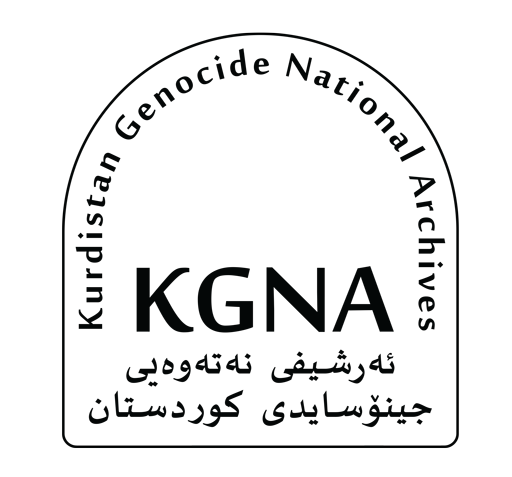
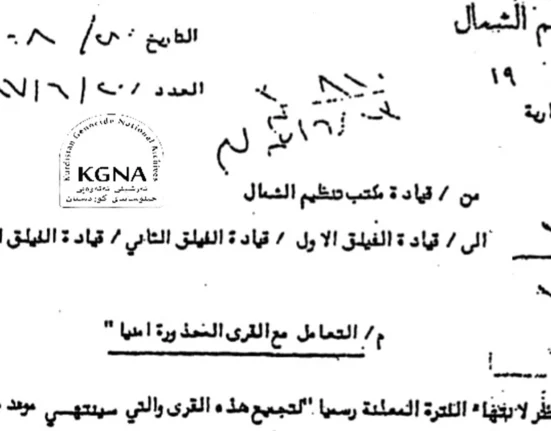

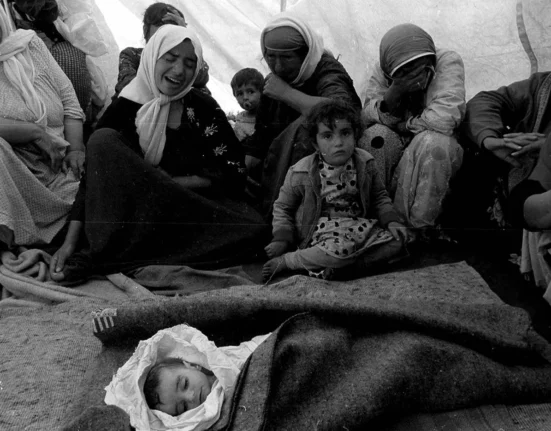

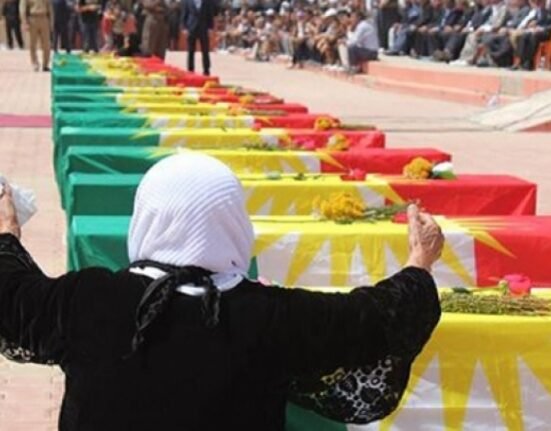
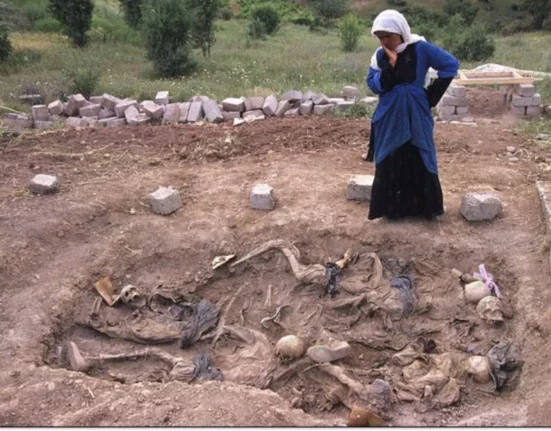
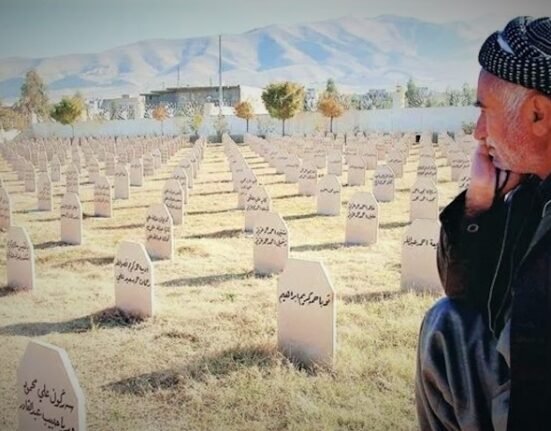

Leave feedback about this